Introduction to Functional Training
Functional training focuses on exercises that improve everyday movements by mimicking real-life actions. Unlike traditional gym workouts that isolate specific muscle groups, functional fitness integrates multiple muscles and joints, fostering strength, balance, and coordination. These exercises are rooted in functional strength training principles, ensuring the body can handle daily activities more effectively.
By incorporating functional training workouts, individuals enhance their performance in sports, work, and daily life. Whether lifting groceries, climbing stairs, or sprinting in a game, functional fitness ensures your body is prepared.

Why It Matters:
Enhances overall body awareness and coordination.
Builds practical strength for everyday tasks.
Reduces injury risk by strengthening stabilizer muscles.
Benefits of Functional Fitness
1. Improves Core Stability
Core muscles are the foundation of movement. Functional exercises like planks, kettlebell swings, and rotational twists target the core, ensuring stability in all activities. A strong core supports better posture and prevents injuries.
2. Enhances Mobility and Flexibility
Functional fitness workouts incorporate dynamic stretches and multi-directional movements, promoting flexibility and joint mobility. This is particularly beneficial for aging individuals and athletes.
3. Boosts Athletic Performance
By simulating sports-specific movements, functional training improves speed, agility, and power. Athletes can train their bodies to perform better under game-like conditions.
Table: Comparison of Traditional vs. Functional Fitness
| Aspect | Traditional Training | Functional Fitness |
| Muscle Isolation | Focus on one muscle group | Engages multiple muscle groups |
| Equipment Required | Machines and free weights | Minimal equipment |
| Application to Daily Life | Limited | High relevance |
The Core Principles of Functional Strength Training
1. Multi-Planar Movements
Functional training emphasizes movements across all planes—sagittal, frontal, and transverse—to mimic real-world actions. For instance, a lunge with rotation incorporates forward and lateral motion, activating multiple muscle groups.
2. Progressive Overload
Strength increases when muscles are challenged progressively. Functional strength training programs incorporate heavier loads or greater complexity over time to ensure continuous growth.
3. Balance and Stability
Stability exercises such as single-leg squats or stability ball push-ups challenge your body to maintain control, strengthening stabilizing muscles.
Specialty vs. Functional Training
Specialty Training: Targeted Development
Specialty training focuses on specific goals or areas, such as rehabilitation, bodybuilding, or endurance.
Functional Training: Holistic Development
Functional fitness aims at overall performance improvement, integrating strength, agility, and coordination.
Key Differences
| Feature | Specialty Training | Functional Training |
| Purpose | Specific skill or recovery | Overall functional strength |
| Muscle Activation | Isolated | Compound, full-body |
| Flexibility in Approach | Limited | Highly adaptable |
Top Functional Training Exercises
1. Deadlifts
A foundational movement that builds full-body strength.
2. Farmer’s Walks
Enhances grip strength, core stability, and endurance.
3. Medicine Ball Slams
Improves explosive power and coordination.
4. Battle Rope Slams
Battle Rope Slams are a powerful full-body exercise that combines cardio and strength training.
Designing a Functional Training Workout
Creating a functional training workout requires balancing different movement patterns, muscle groups, and intensity levels. The goal is to simulate everyday actions while ensuring progression and variety in the exercises.
How to Create Balanced and Effective Routines
- Incorporate Compound Movements
- Compound exercises, such as squats and deadlifts, target multiple muscles at once, improving overall efficiency.
- Focus on Movement Patterns
- Ensure exercises include pushing, pulling, squatting, hinging, and rotating to cover all fundamental patterns.
- Adjust Intensity Levels
- For beginners, start with bodyweight exercises and gradually introduce resistance, such as kettlebells or resistance bands.
Functional Fitness Workouts for Beginners
Beginners can benefit from simple routines focusing on building foundational strength and coordination. These workouts are ideal for enhancing body awareness and mastering basic techniques.
Sample Beginner Routine
| Exercise | Reps | Sets | Rest Period |
| Bodyweight Squats | 10-12 | 3 | 30 seconds |
| Push-Ups (Knee Option) | 8-10 | 3 | 30 seconds |
| Glute Bridges | 12-15 | 3 | 30 seconds |
| Plank Holds | 20-30 sec | 3 | 45 seconds |
Advanced Functional Strength Training Programs
Advanced programs integrate explosive movements, heavier loads, and increased complexity to push fitness levels higher. These routines are best for athletes or individuals with a strong fitness foundation.
Key Components of Advanced Programs
- Plyometric Exercises
- Include box jumps or burpee pull-ups to develop explosive power.
- Increased Resistance
- Utilize barbells or resistance bands for greater intensity.
- Unilateral Training
- Perform single-leg or single-arm exercises for improved balance and core engagement.
Sample Advanced Routine
| Exercise | Reps | Sets | Rest Period |
| Barbell Deadlifts | 6-8 | 4 | 90 seconds |
| Weighted Bulgarian Split Squats | 8-10 | 4 | 90 seconds |
| Renegade Rows | 8-10 | 3 | 60 seconds |
| Kettlebell Swings | 15-20 | 3 | 60 seconds |
Integrating Functional Exercises into Daily Life
Functional training isn’t limited to the gym. By incorporating simple movements into your routine, you can enhance physical performance in daily tasks.
Examples:
- Carrying Groceries: Mimic the farmer’s walk by holding heavy bags with proper posture.
- Climbing Stairs: Perform step-ups or lunges regularly to mimic climbing motions.
- Lifting Objects: Practice deadlift mechanics when lifting heavy items.
Common Mistakes in Functional Training
- Skipping Warm-Up
- Failing to warm up can lead to reduced performance and increased injury risk.
- Poor Technique
- Performing exercises incorrectly compromises effectiveness and safety.
- Neglecting Recovery
- Overtraining without rest days can cause burnout and hinder progress.
Equipment for Functional Training
Functional training is versatile and often requires minimal equipment. However, some tools can enhance your workouts significantly.
Essential Equipment:
- Battle Ropes: Perfect for high-intensity interval training (HIIT), improving endurance, and building upper body strength. Battle ropes are versatile tools that engage multiple muscle groups simultaneously, enhancing functional performance. Kettlebells: Ideal for swings, presses, and carries.
- Resistance Bands: Useful for dynamic stretches and resistance exercises.
- Medicine Balls: Great for explosive movements like slams and throws.
Optional Equipment:
- TRX Suspension Trainer
- Stability Ball
- Dumbbells
Functional Training for Rehabilitation
Functional training is a cornerstone of physical therapy and rehabilitation programs. It helps individuals regain strength and mobility after injuries.
Rehabilitation Benefits
- Restores Joint Function:
- Exercises focus on improving range of motion and joint stability.
- Reduces Muscle Imbalances:
- Targeted movements correct postural deviations.
- Rebuilds Confidence:
- Gradual progressions allow patients to regain trust in their bodies.
| Exercise | Targeted Muscles | Key Benefits |
| Deadlift | Hamstrings, glutes | Builds overall strength |
| Medicine Ball Slam | Core, shoulders | Boosts explosive power |
| Farmer’s Walk | Core, grip, shoulders | Enhances endurance |
Conclusion
Functional training is more than just a fitness trend—it’s a lifestyle change that equips you for better movement, reduced injury risk, and enhanced overall health. Whether you’re an athlete or someone looking to improve daily functionality, integrating functional fitness workouts into your routine is a step toward a stronger, more agile you. Start today and experience the transformative power of functional strength training!
For a complete collection of exercises targeting every muscle group, visit our Exercise Library. Discover in-depth guides and specialized workouts to enhance your overall performance and support your fitness journey!
Elevate Your Functional Workouts: Essential Resources
If you want to dive deeper into chest muscle anatomy and learn how to maximize your workouts, explore this comprehensive guide on ExRx.net.
Looking for advanced tips and variations? Bodybuilding.com offers expert insights for all fitness levels, whether you’re just starting or an experienced lifter refining your technique.
Remember, proper form and safety are key to preventing injuries and achieving results. For trusted advice on exercise safety and guidelines, visit Mayo Clinic.
